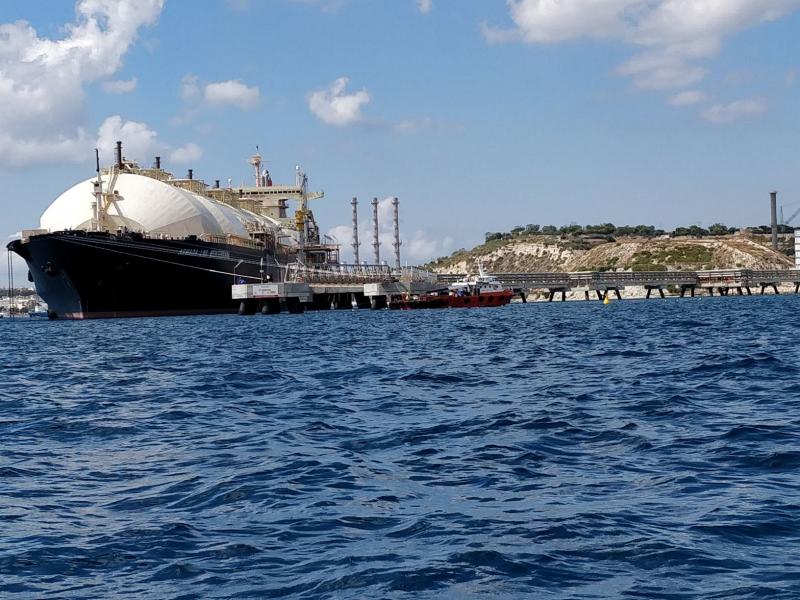
09.06.2023
The German Gas and Hydrogen Storage Association (INES) today published an update of the association's own gas scenarios for the coming winter 2023/24. The June update shows that the positive view of the filling of the gas storage facilities has been confirmed by reality so far.
The INES gas scenarios consider the upcoming filling of the gas storage facilities and the gas supply situation in the coming winter. They take into account the data up to the end of May 2023. In April 2023, the monthly average injections in gas storage facilities in Germany were at a low level (0.2 TWh per day). Decreasing gas consumption as a result of the temperature and a constant level of gas supply in Germany have led to storage being increased to 0.7 TWh per day in May. The market prices in Germany are also still providing strong incentives for storage.
The INES scenarios show that a moderate to low LNG import volume in Europe over the summer of 2023 is sufficient to completely fill the gas storage facilities in Germany before the winter of 2023/2024.
Against this background, the June update of the INES scenarios also considers actual LNG imports to Europe from the past few months. From January to May, large amounts of gas reached Europe via LNG import terminals. The focus of LNG imports lay in north-western Europe. Imports were particularly large via the United Kingdom (0.9 TWh per day), France (0.9 TWh per day), the Netherlands (0.6 TWh per day) and Belgium (0.4 TWh per day). LNG imports via Italy (0.5 TWh per day) and Spain (0.8 TWh per day) put up another focus point in southern and south-western Europe.
For the winter of 2023/24, the INES scenarios show that gas storage facilities will only be used moderately when temperatures are warm. At medium to cold temperatures, on the other hand, the gas storage facilities are emptied significantly or completely. Compliance with the statutory filling level requirement of 40 percent on February 1, 2024 is challenging in the last two cases.
In the case of cold temperatures, the gas storage facilities are already completely emptied in January 2024 in the scenario calculations. A lack of gas cannot be resolved in the models. If cold temperatures occur, a consumption level that is characterized by current savings can probably no longer be fully covered.
INES Managing Director Sebastian Bleschke comments: “The storage phase has been in full swing since May at the latest. Looking at the current price spread between the summer and winter prices for gas, it can be assumed at the moment that filling will continue in the coming months. The current LNG import level is completely sufficient for this. However, we must not be misguided: Even if the gas storage facilities are completely refilled, there is still a risk of gas shortages in winter when temperatures are cold.”
BACKGROUND ON INES GAS SCENARIOS
INES continuously models European gas markets to assess gas supply security. Based on this and taking into account storage filling levels as of June 1, 2023, three scenarios were considered for the upcoming storage filling and gas supply in Germany for winter 2023/2024:
The INES scenarios for gas supply in the upcoming winter 2023/24 were first published on April 19, 2022, based on data until the end of March 2023. The current update is the first along the upcoming months.
During the summer period, INES will only publish updates on the INES gas scenarios every two months. The update cycle will be shortened to one month in the winter period. The next update is planned for August 10, 2023, which will provide a closer look at infrastructure options to improve gas supply in the winter 2023/24..
A detailed explanation of the INES scenarios and results can be found in the presentation slides for the press conference, as well as in the documentation for the presentation. In addition, all press conferences have been recorded and can be viewed anytime on the INES YouTube channel.
If you are interested in current gas storage filling levels, please visit the INES storage map.
FURTHER INFORMATION: